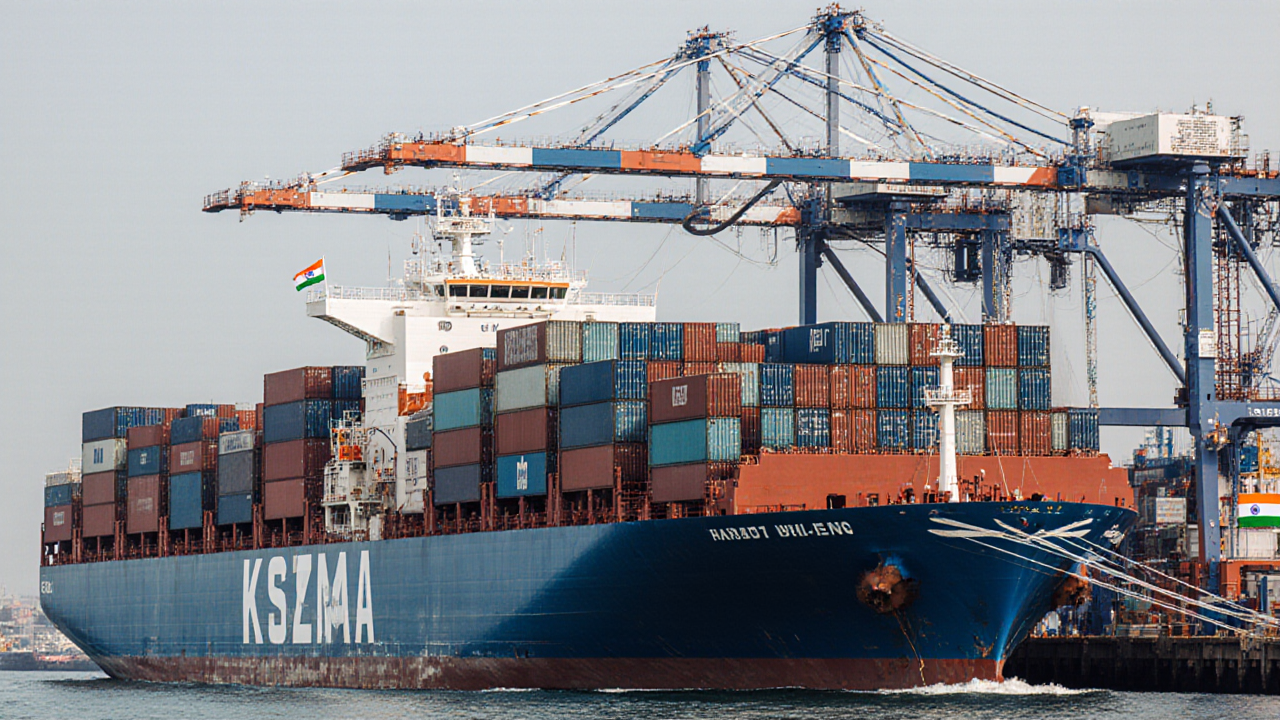
Reflagging 12 container vessels in India marks a decisive move by a leading logistics provider to broaden its operational footprint and strengthen its supply‑chain resilience. This shift underscores a growing industry trend where shipping operators seek to balance geopolitical exposure with strategic market access. By transferring vessels to a flag that offers favorable regulatory and tax environments, the company can streamline cross‑border operations while maintaining a unified fleet strategy. The decision also signals a commitment to operational excellence through adaptive fleet management.
Why reflagging matters extends beyond cost savings; it reflects a broader diversification strategy that mitigates risk in volatile markets. The Indian maritime corridor, with its rapidly expanding port infrastructure and proximity to key manufacturing hubs, offers a gateway to Southeast Asian and African trade lanes. Aligning vessels with local flagging authorities can simplify customs clearance, reduce port fees, and enhance compliance with emerging environmental standards. Moreover, a diversified flag portfolio allows operators to negotiate more favorable insurance terms and access a broader pool of skilled maritime labor.
Strategic implications for supply chains are profound. Diversification through reflagging enables global shipping lines to tap into new hinterland markets without over‑concentrating assets in a single jurisdiction. This flexibility translates into smoother inventory flows, reduced lead times, and a more responsive network that can adapt to shifting demand patterns. By embedding local market intelligence into routing decisions, operators can align transportation capacity with regional production cycles, thereby improving service levels for end‑customers. The move also reinforces a company's ability to navigate regulatory changes, such as carbon‑pricing initiatives and digital compliance mandates, with greater agility.
Operational excellence is achieved when reflagging is paired with rigorous fleet oversight. A unified vessel registry simplifies maintenance scheduling, crew rotation, and regulatory reporting, leading to lower downtime and higher utilization rates. Leveraging real‑time telemetry and predictive maintenance analytics helps operators preempt mechanical failures and optimize fuel consumption. These efficiencies, in turn, reduce operating costs and improve the reliability of the shipping schedule, which is critical for time‑sensitive supply chains.
Technology and sustainability converge in this reflagging strategy. Deploying digital twins for each vessel allows shippers to simulate route variations, assess fuel burn, and evaluate emission footprints before committing to a voyage. Internet‑of‑Things sensors capture granular data on hull integrity, ballast operations, and engine performance, feeding into advanced analytics that drive continuous improvement. By integrating these insights into a holistic sustainability framework, operators can meet stricter IMO 2025 and 2030 emission targets while preserving competitiveness.
A global perspective that respects local nuances is essential for successful flag transitions. Operators must collaborate with port authorities, local regulatory bodies, and industry associations to ensure that vessel operations align with national maritime policies and labor standards. This partnership model not only eases compliance but also fosters goodwill and facilitates smoother customs procedures. Understanding regional port capacities, hinterland connectivity, and infrastructural constraints enables operators to design routes that maximize throughput and minimize congestion.
Actionable takeaways for supply‑chain leaders include: reassessing flagging strategies to align with long‑term risk profiles; investing in integrated digital platforms that provide end‑to‑end visibility across the fleet; and building robust partnerships with local stakeholders to navigate regulatory landscapes. Emphasizing crew training on new operating systems and safety protocols ensures that human capital matches technological advancements. Finally, embedding sustainability metrics into performance dashboards signals a commitment to responsible shipping and can unlock new market opportunities.
In conclusion, the reflagging of 12 vessels in India exemplifies a broader industry shift toward diversification, operational excellence, and sustainability. Supply‑chain executives who adopt similar strategies can secure greater flexibility, reduce exposure to geopolitical shocks, and position their networks for the next wave of global trade evolution.
Loading comments...